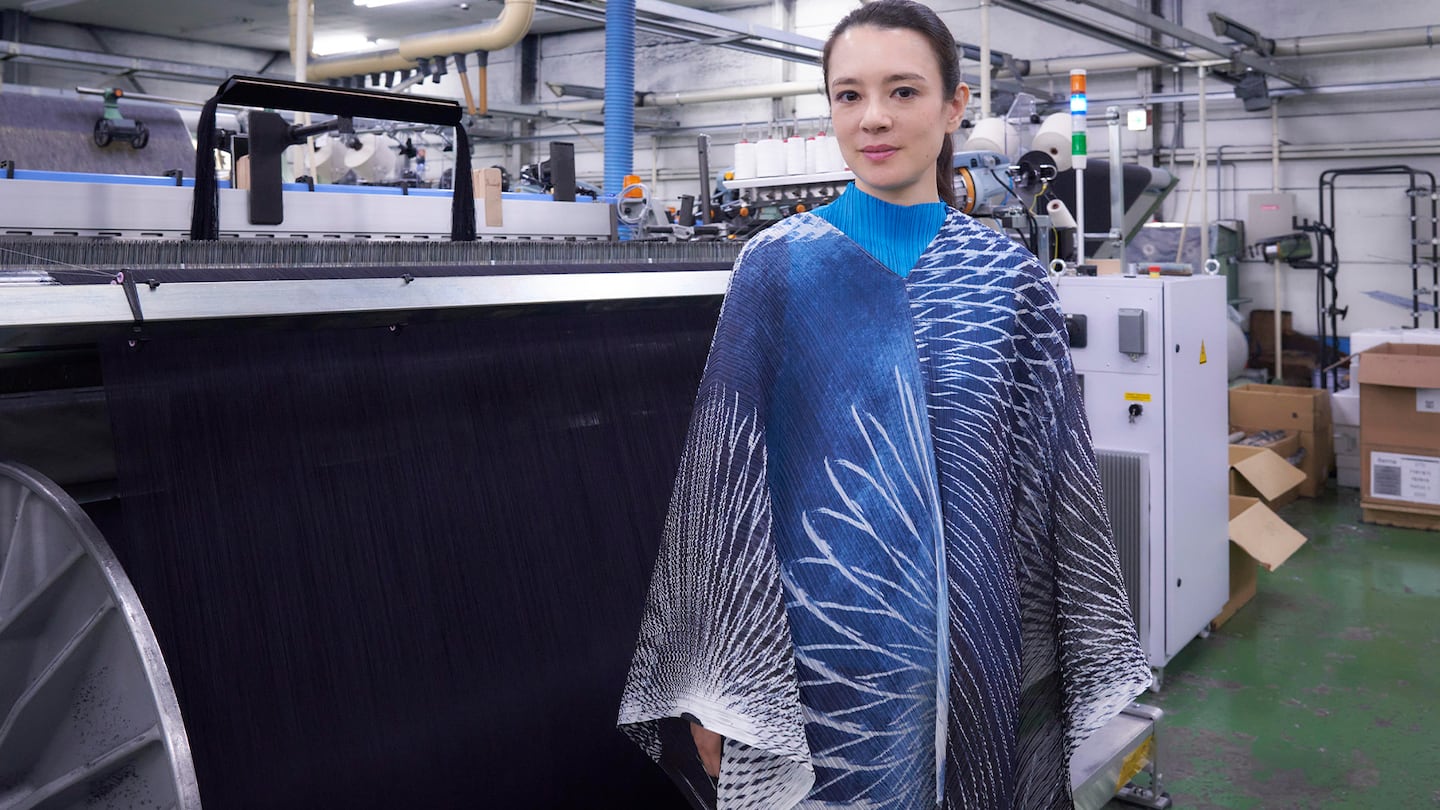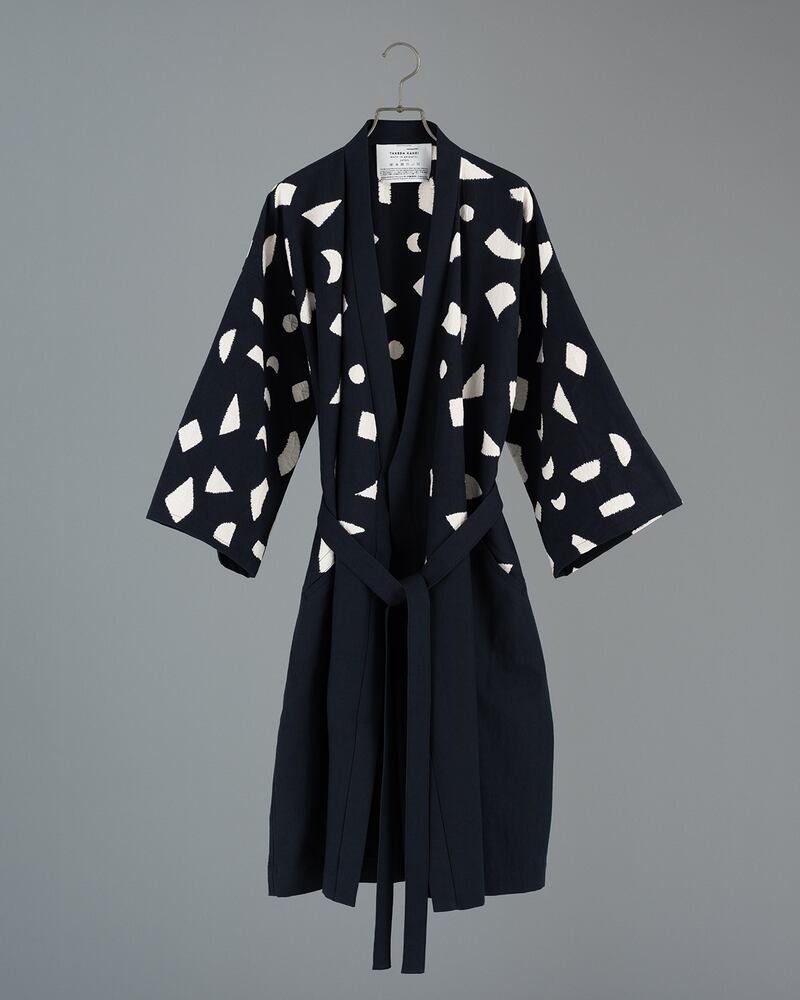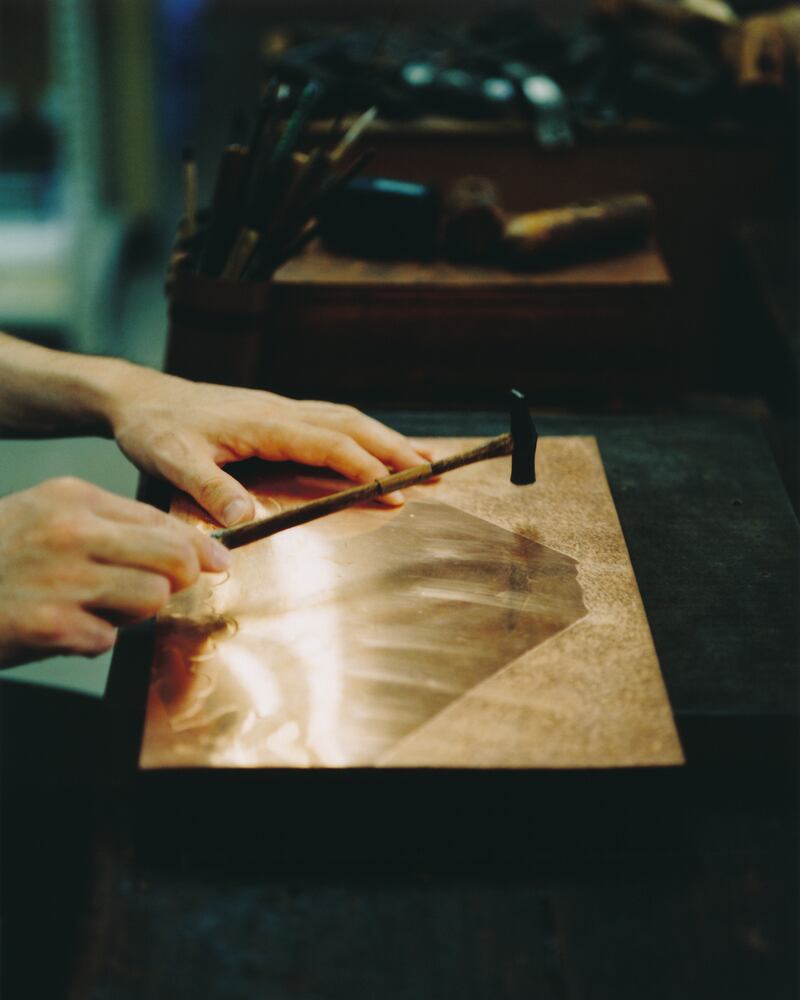
The Business of Fashion
Agenda-setting intelligence, analysis and advice for the global fashion community.

Agenda-setting intelligence, analysis and advice for the global fashion community.

Originating in the French town of Nîmes and popularised in America, denim was traditionally associated with western countries. Hundreds of years on, however, high quality producers are few and far between in the US and just as rare in manufacturing hubs like Italy, says LVMH’s Emina Morioka. These days, the mecca for premium denim is widely known to be Japan where she heads up the luxury group’s local Métiers d’Art division.
Premium producers are concentrated in Okayama prefecture in the west of the country’s largest island Honshu. Among the few firms still dyeing with natural indigo and soft water from the nearby Chugoku mountains is Kuroki, which in April was named the first-ever Japanese partner for LVMH Métiers d’Art. The division launched in 2015 as a collaborative channel between the group and a growing network of makers, craftspeople and manufacturers.
Denim was a no-brainer for the group given the number of luxury brands in its portfolio looking to diversify their collections by tapping master producers of the textile. Without that degree of expertise and specialisation, “it’s really difficult to make a difference with such a universal fabric,” said Morioka, who works as a facilitator between LVMH brands and Japanese artisans and manufacturers.
The group is tight-lipped about the specific brands that have worked with Kuroki — and other Japanese producers. It’s still common for such brand-supplier relationships to be shrouded in secrecy as they represent a competitive advantage.
ADVERTISEMENT
Though Kuroki had worked with LVMH brands in the past, the new official relationship has helped the business better define its goals in sustainability and innovation, said president Tatsuki Kuroki who wants to see the small but highly-specialised 73-year-old business reach “denim lovers around the world.”
“We are confident that we can share good practices and wisdom, and together [eventually] find great solutions to all the challenges our industry is facing,” he said.
LVMH is far from the only fashion giant partnering with Japanese artisans and manufacturers in the supply chain. A growing number of both luxury and mass market players are collaborating with masters of historical crafts, ranging from enamelware to woodwork, on designs for a global audience.

Take Tokushima-based Buaisou, a firm that cultivates indigo and produces indigo-dyed goods: it has worked with the likes of Tory Birch, Uniqlo, Aesop, Nike and Jimmy Choo. Meanwhile, in Saga prefecture, Arita Porcelain Lab has created perfume bottles for Guerlain, and in 2022 Hermès celebrated a limited-edition capsule featuring a Constance bag and scarves crafted with marbled silk from Kyoto Marble. The previous year, Tiffany & Co. and the World Monuments Fund launched Japan’s first professional training programme for gold leaf craft in Kanazawa.
While self-interest clearly drives such partnerships and success will primarily be measured by short-term return on investment, there is also the prospect of an important long-term benefit to the wider industry. Many artisans and smaller producers in Japan and other countries with a rich fashion culture are at risk of having their know-how disappear unless alliances form that help to preserve them.
The Japanese language hints at what makes the country’s rich craft culture so appealing. Think kodawari, which loosely translates as the pursuit of perfection or a relentless attention to detail while respecting both heritage and know-how. There’s also mottanai, a call to avoid wasting well-crafted objects and precious resources; shokunin, which is often used to describe the spirit with which people devote themselves to the mastery of a skill; and takumi, an artisan unrivalled in their field of expertise.
The legacy of this outlook on life is one of the reasons that the Japanese have also been one of the global luxury industry’s key consumer groups.
“Japanese know-how in manufacturing and craft is unique on the world stage,” said Matteo de Rosa, chief executive of LVMH Metiers d’Art. But however carefully these skills have been passed down through generations, he notes that the bulk of Japan’s artisanal know-how is still at risk. It is a result of dwindling demand for traditional goods; the rise of mass-produced alternatives; a shortage of young talent taking up the skills; and barriers to growth across categories and markets.
ADVERTISEMENT
“Lots of artisans are family-based, so they learn their skills from [their elders],” said Hiroyui Murase, the founder of Suzusan, a luxury brand that specialises in shibori dyeing and a spin-off of Murase’s fifth-generation family business in Arimatsu, Nagoya. “[Artisans are] masters of the craft, but not necessarily the business side. It’s a completely different world.”
Under Murase, who was educated in Germany, Suzusan has directly targeted luxury consumers in Europe and successfully lessened the manufacturer’s dependence on wholesale clients. Now, he’s working to help other artisans carve out international sales channels and aim for sustainable growth through ‘Creation as Dialogue,’ a project developed with the city of Nagoya to connect local craftspeople with the European market. For its first edition, Europe-based Japanese designers created pieces alongside Nagoya-based artisans that will be displayed at Paris’ Maison & Objet trade fair this September.
Among the designers is Sawako Furukawa, a consultant with 17 years of experience as a handbag designer at brands like Dior Homme, Versace and Bottega Veneta, and Daisuke Hirabayashi, a Basel-based architect and photographer who worked at Herzog & de Meuron before launching his own practice.
“We have made several attempts to expand into [the] overseas markets in the past, but unfortunately, we haven’t achieved the desired results,” said Masayoshi Urata, the sales division manager at 415-year-old Takeda Kahei Shoten, a shibori manufacturer that crafted a collection of three gowns inspired by the historical Takeda family residence for ‘Creation as Dialogue.’
Despite having worked with brands such as Issey Miyake and Etro, declining demand for high-end kimonos is still weighing on the company’s sales. Now, the firm is focussing on entering new markets and navigating new distribution channels while tailoring products to local markets.
Nakaden Keori, a 92-year-old textile company specialising in wool and knitwear, has been working with non-Japanese luxury and fashion brands since the 1990s. They now make up around 10 percent of its overall business, but vice president Kimihiro Nakashima is looking to increase that share.
“The Japanese market, especially the big apparel company clients, are shrinking so we want to [offset that with a more stable] international business. We also want more… international attention [through design collaborations with] young Japanese designers that have [a] global vision,” said Nakashima.
Takeda Kahei Shouten works with around 300 in-house and external artisans, including 16 certified traditional craftspeople. But none of them are in their 20s or 30s.
ADVERTISEMENT
A lack of younger employees is the most urgent crisis facing these storied businesses, said Japan Fashion Week Organization director Kaoru Imajo, noting that the businesses that have survived are those led by 30 to 50-year-olds who have been willing to experiment with new categories and explore new markets.

Murase believes that international partnerships will help boost interest among younger candidates. He speaks from experience: one of Suzusan’s youngest employees reached out to the company four years ago having read about the company’s work for Dior. “It’s not just the name value itself, but it’s the fact that techniques from 400 years ago can create innovation — that is really attractive to the new generation,” said Murase. “Thanks to those collaborations, they see a new side to the craft.”
The pandemic, which pushed younger Japanese to reconsider white collar jobs and urban lifestyles, has also made an impact. Ando Cloisonne, a 143-year-old firm specialising in Owari enamelware, has seen an uptick in interest from young technicians in recent years, president Shigeyuki Ando tells BoF.
The business launched a jewellery collection named J. Ando that fuses traditional cloisonne techniques with modernist designs. It has yet to work with a fashion or luxury brand based outside Japan, but collaborating with younger designers has allowed the company to “create products that were previously unimaginable while breaking away from our existing product lines,” said Ando. “We’ve recognised the importance of adapting our offerings to the changing times.”
Hosoo, a 327-year-old textile mill with a bevy of luxury clients, has little trouble attracting fresh candidates, says president Masataka Hosoo. The business reaches a younger audience through its R&D division Hosoo Studies, which conducts research on textile innovation through organisations like universities. No wonder he is more optimistic than most.
“I feel that attention to craftsmanship is increasing in the world’s luxury market,” said Hosoo. “Every day, creators from all over the world come to Kyoto on inspiration tours. I feel that a new era of craftsmanship is about to begin.”
Last December, the company started collaborating with Gucci for a bag design, using exclusive Nisijin silk brocade fabric, that was sold exclusively in Japan before a second edition was released in June 2023.
While interest in working with Japanese manufacturers and artisans is high among the LVMH’s stable of brands, executing collaborations before the creation of the Métiers d’Art Japan division wasn’t always easy, Morioka notes.
“With smartphones and digitisation, it seemed like distance had been reduced… but in reality, that’s not the case,” she said, referring to not only the language barrier but differences in business culture. “We can take a flight and [physically] check in with a manufacturer in Italy or Spain, but in Japan it wasn’t possible. There were all these barriers that were making people feel it was not possible to work with Japan more, in terms of lead times and communication and accessibility.”
Nakaden Keori’s Nakashima notes that added obstacles are tight deadlines, exchange rate fluctuations and working through third-party trading companies. “The orders are not that stable and the [agency] fees cost too much” for the latter.
Beyond language and logistics, there is also the task of helping craftspeople understand new audiences and products within the context of their hundred-year-old crafts. “Throughout the creative process, we did have to remind them who the market was, what the goal was, because they would want to stay in their comfort zones,” notes Murase. “We needed to push a little bit sometimes, to make sure they had their eyes set on the international market.”

While some Japanese artisanal producers struggle to adapt at all, others can go too far in a bid for a quick fix. The success of these partnerships is as reliant on their confidence as it is on the strength of their business acumen.
“Sometimes they have a one-of-a-kind craft, but to survive they find accessible solutions to keep the business going,” Morioka said, using the example of precious one-of-a-kind woven textiles later used to make drink coasters.
“They shouldn’t [undersell] themselves because they can’t do business the same way they did 20 years ago. They have to be proud of their craft — they’re doing something nobody else can do.”
Morioka’s division is working to build a network that allows luxury brands to more easily access Japanese know-how through mid- and long-term partnerships but ultimately, it’s the artisans and craft businesses themselves that must fight for their own survival.
Working with glitzy names as a partner can bring in revenues and younger employees but building upon that momentum and actively pursuing sales channels in new markets and sectors is what will give some makers much-needed staying power.
Christine Edman, executive officer of Japanese e-commerce site Zozo, talks about what makes the country’s consumers tick, and how the fashion landscape is set to shift in the years ahead.
Dan Bailey and Joe Kazuaki of Tokyo Dandy tell BoF about connecting Tokyo’s fashion and club scenes, and being a ‘welcoming committee’ for international brands.
Though e-commerce reshaped retailing in the US and Europe even before the pandemic, a confluence of economic, financial and logistical circumstance kept the South American nation insulated from the trend until later.
This week’s round-up of global markets fashion business news also features Korean shopping app Ably, Kenya’s second-hand clothing trade and the EU’s bid to curb forced labour in Chinese cotton.
From Viviano Sue to Soshi Otsuki, a new generation of Tokyo-based designers are preparing to make their international breakthrough.
This week’s round-up of global markets fashion business news also features Latin American mall giants, Nigerian craft entrepreneurs and the mixed picture of China’s luxury market.